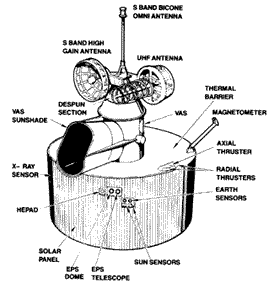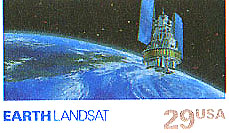|
These include satellites which monitor the weather, such as the GOES series (one of which is shown on the right) of the US National Oceanic and Atmospheric Administration (NOAA). They are in synchronous orbit, keeping the same area in view as the Earth rotates. To this class also belong "spy satellites" which observe the ground from low circular orbits. For obvious reasons they are rarely described in public, but some are said to have sizes comparable to that of the Hubble telescope. The US Air Force furthermore sponsors polar satellites of the DMSP series, scanning the cloud cover of the polar region and also studying ions and electrons of the magnetosphere. |

